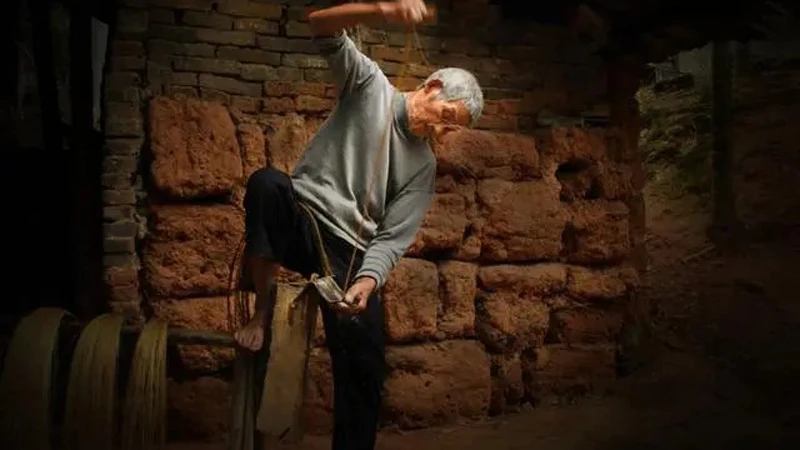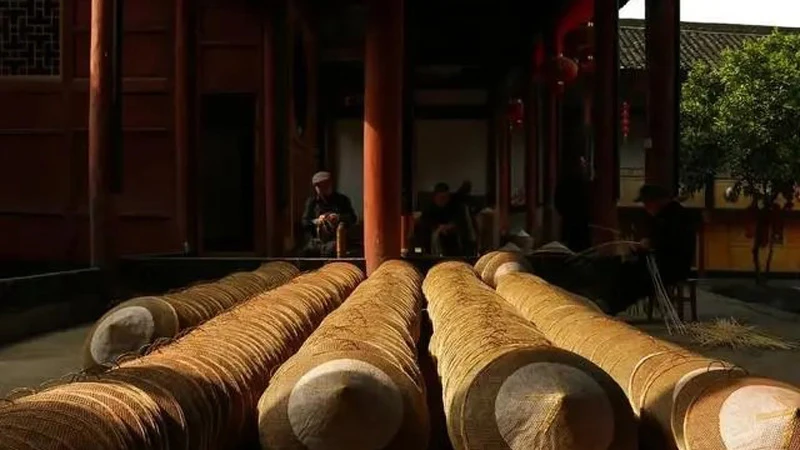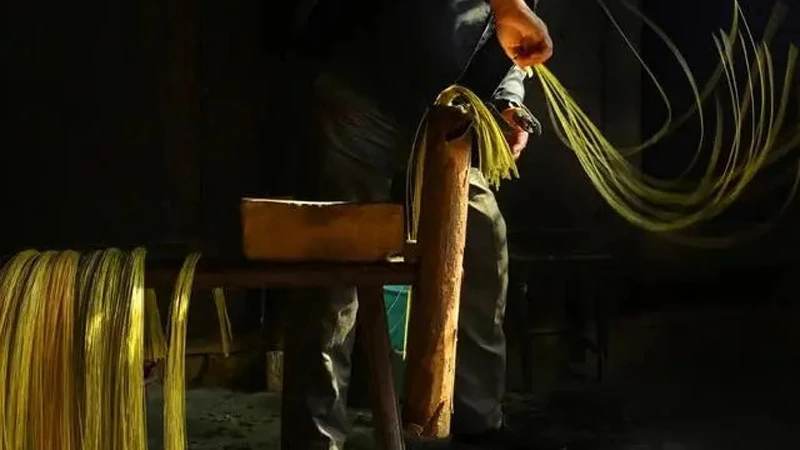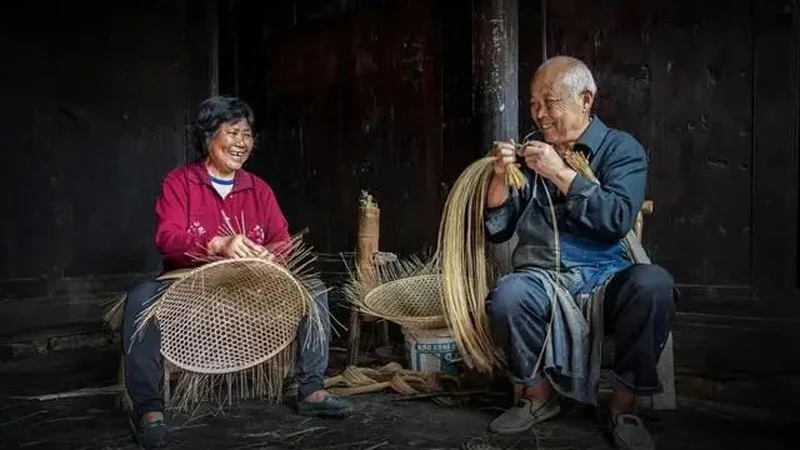Nestled in the heart of Zhongfang Town (中方县), China, there is an enduring tradition that has long symbolized the region's deep connection to both nature and craftsmanship—the bamboo hat, or "douli (斗笠)". This simple yet elegant headgear, often depicted in poetry and art, holds a special place in Chinese cultural heritage. The bamboo hat has become more than just a functional accessory; it is a timeless symbol of the region's ingenuity, resourcefulness, and respect for the natural world.
As you wander through the charming streets and alleyways of Zhongfang, you'll notice a unique sight. At almost every corner, residents are busy crafting these iconic hats, weaving together bamboo strips with remarkable skill. Some sit at the doorways of their homes, others at small wooden stools, each person using their hands to bring the bamboo to life, patiently creating what will soon be a work of both form and function.

The bamboo hat's origins can be traced back to the Han Dynasty, but it reached its peak during the Ming and Qing Dynasties. Legend has it that during the reign of the Qianlong Emperor, artisans spent years perfecting the art of hat-making, experimenting with different materials and techniques. What began as a simple bamboo product eventually evolved into a sophisticated and multifunctional accessory.
Initially, these hats were made entirely from bamboo strips. However, after numerous trials, the use of water bamboo ("yan zhu (淹竹)") became standard, and further refinement introduced the use of other bamboo varieties, such as "nan zhu (楠竹)" (camphor bamboo) and "tao zhu (桃竹)" (peach bamboo), which added both strength and aesthetic appeal to the hats. This innovative process resulted in a hat that not only had a unique design but also provided practical benefits such as sun protection, insulation, and water resistance.
The traditional bamboo hat is lightweight yet durable. It typically weighs only around 300 grams but is crafted with such precision and care that it is surprisingly sturdy. Each hat is meticulously woven to ensure the perfect balance of structure and flexibility. With its cone-shaped design, it provides ample shade from the sun and protects the wearer from the rain, all while allowing for airflow to keep the head cool during hot summer days.
Crafting a bamboo hat is a painstaking process, requiring 19 tools and 81 steps to complete. The process begins with the creation of the inner and outer shells of the hat. These are woven using fine bamboo strips, each piece carefully cut and shaved to achieve the perfect size and shape. Between these two layers, a piece of floral cloth is inserted at the top, adding a touch of color and vibrancy to the hat's design. At the bottom, a delicate band of brown silk is used to seal the edges, giving the hat its final polished appearance.
Once the basic structure is complete, the outer layer of the hat is treated with a mixture of oil and other materials to ensure its durability. The process continues with the application of decorative elements, such as floral prints, and a final coat of lacquer to enhance both the beauty and longevity of the bamboo hat. The result is a product that is not only practical but also visually stunning, with intricate patterns and a smooth, shiny surface that reflects the craftsmanship behind each piece.
A finished bamboo hat typically has a diameter of about 60 centimeters and is divided into three sections: the top, middle, and bottom. The top features five black triangles, symbolizing strength and protection, while the middle section is adorned with bright yellow accents and floral patterns, reflecting the vibrancy of life in Zhongfang. The bottom section is a translucent bamboo mesh, through which the brown silk lining can be seen, adding a layer of mystery and elegance to the overall design.
The beauty of the bamboo hat extends beyond its appearance and functionality. It is deeply embedded in the culture of Zhongfang Town and serves as a bridge between the past and present. The creation of the bamboo hat is not just a skill; it is an expression of respect for nature, tradition, and craftsmanship. The process itself involves a deep understanding of the materials, the environment, and the intricacies of manual work.
Beyond its historical and cultural value, the bamboo hat has also adapted to the changing needs of modern life. As the craft has evolved, so too has the design of the hats. Today, artisans continue to experiment with new materials and techniques, ensuring that the bamboo hat remains relevant in contemporary society. Its lightweight design, combined with its ability to protect against the elements, makes it a popular choice for outdoor activities, particularly in regions where climate and weather conditions can be unpredictable.
Moreover, the bamboo hat represents a sustainable form of craftsmanship, using natural materials that are both renewable and environmentally friendly. In an age where sustainability is becoming increasingly important, the bamboo hat offers a model for how traditional crafts can adapt to modern concerns while maintaining their cultural integrity.
The Future of Zhongfang's Bamboo Hats
Each bamboo hat tells a story—of generations of artisans who have honed their craft, of a community that values tradition, and of a culture that continues to innovate while staying true to its roots.
For visitors and locals alike, walking through the streets of Zhongfang is like stepping back in time. It's a place where history and tradition are alive, where every step is a nod to the past and a step toward the future. The bamboo hat, with its simple beauty and enduring function, is a symbol of the timeless bond between the people of Zhongfang and their heritage.
As the bamboo hat continues to be crafted and cherished, it reminds us that sometimes the most profound beauty lies not just in the object itself but in the skill, culture, and history that shape it.



